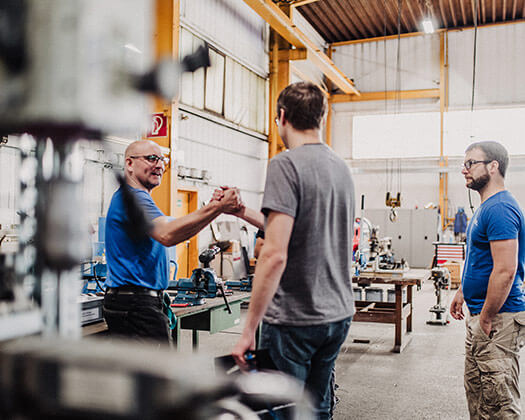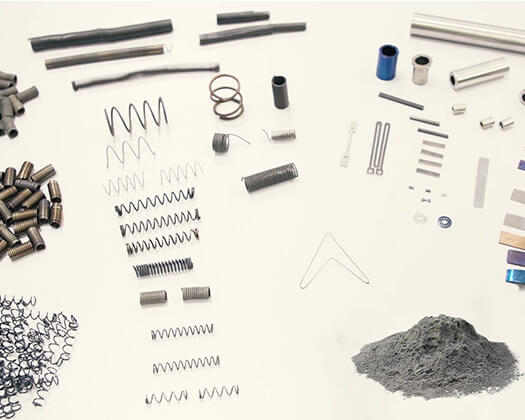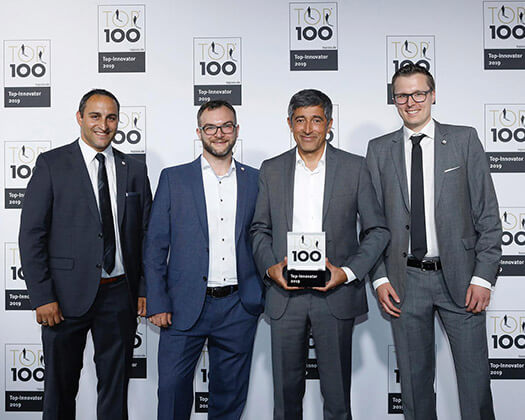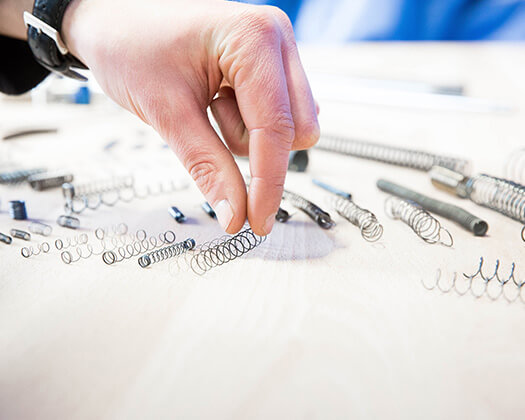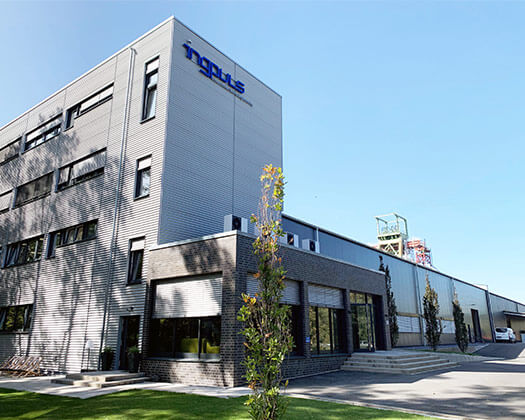
Shape memory alloys made from nickel titanium can be characterized as follows
In this section we will provide you with basic information about memory alloys (SMA). As an introduction to shape memory, we will show you videos teaching you about the basic principles of the shape memory effect. If you are interested in receiving further details, you can download the course as a PDF HERE.
You will receive clearly presented and easy-to-understand material, including a brief summary, which will give you good understanding of SMA and will enable you to inspire your customers with weight- and cost-saving as well as function-integrated solutions – taking your products to a new level.
What you see with the shape memory effect
You may be taken aback if you are observing the shape memory effect for the first time. Have a look at the video clips below:
The shape memory effect is not magic: It can be explained using materials science. To make technical and individual use of this effect for your desired purpose, environmental conditions, such as the temperatures during application, play an important role. In fact the outcome is determined by the interaction between the selected alloy and the temperatures the material is subjected to in its operating conditions. Primarily the two-way effect or the so-called superelasticity are used to tap into previously unknown potential. These effects are ultimately based on diffusionless shear in the crystal lattice of the material causing a phase transformation. During this transformation, the material’s properties, such as the electrical properties or stiffness, change significantly and ultimately cause the change in shape.
Extrinsic two-way effect
With the one-way effect, after a seemingly plastic deformation, the original shape of the material is restored by heating. A distinction should be made between a low-temperature phase (= initial state) and a high-temperature phase (heated state).
This course will show you precisely how the one-way effect causes the material to behave and what possibilities it opens up for you. You can download it HERE.
Pseudoelasticity (also called “pseudoelastic behaviour” or “superelasticity”)
A pseudoelastic shape memory alloy element behaves like rubber. If you hold pseudoelastic SMA elements in your hands, you can bend them like rubber with little effort – and yet they also possess strengths as they are found in metals. This allows the robust behaviour of a metal to be combined with the flexible behaviour of an elastomer. It’s almost a material with hybrid properties.
Pseudoelastic SMA material is designed entirely differently. Here also, there is a great dependence on the operating temperature and the selected alloy. In this SMA-Course, you will also learn how the material behaves with pseudoelasticity and which options you can create for yourself with this effect.
In the characterization section of the course you will learn:
- to differentiate between low temperature phase and high temperature phase
- how the transformation of martensite and austenite into one another occurs
- the material behaviors in the respective phases
- how the material knows the shape which it should assume based on the shape memory effect
- that these properties can be specifically set for you
- the exact difference between two way effect and pseudoelasticity
- examples for practical comprehension, e.g. from the world of magic by Uri Geller
Let’s recap what we’ve learnt in this section:
- The properties of SMA can be divided into different classes (effects).
- These effects are mainly called two-way effect and pseudoelasticity (also pseudoelastic behavior, superelasticity).
- The effects can be set according to your requirements and depend on temperatures, the alloy and other parameters.
- Your customers will be amazed and believe you can perform magic. But no magic required – all you need is the expertise of Ingpuls!

